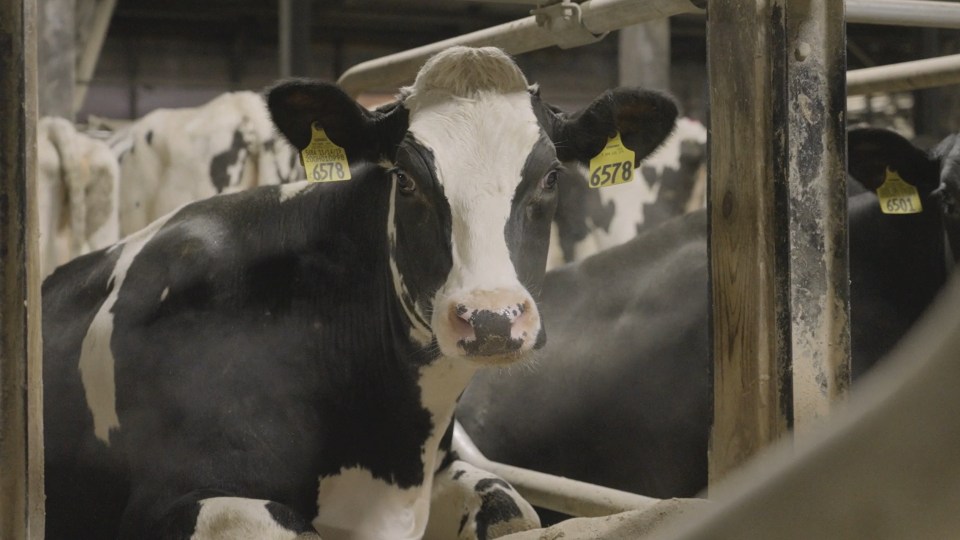Tips to sharpen your dry-off practices
By Dr. Tiago Tomazi
It would be handy to have a crystal ball at dry-off time.
After freshening, will the cow produce high-quality colostrum that transfers needed antibodies to her calf? Will she freshen without mastitis? Will she rejoin the milking herd in good health and be ready for a productive lactation?
Answers to these questions may depend on the effectiveness of dry-off procedures, including proper administration of vaccines, dry cow therapy and internal teat sealants. Drying off a cow takes only a few minutes, but these simple tasks have a big impact on the success of a cow’s subsequent lactation.

Many dairies struggle to perform dry-off steps consistently and correctly every time. Often, animal caretakers aren’t properly trained or perhaps they simply don’t understand why they perform each procedure or why those practices are important to the cow, the producer and the operation.
Dry-off requires strict attention to details, especially when it comes to hygiene. Successful dry-off requires workers to have easy access to the tools they need — such as clean clothes, disposable gloves and alcohol wipes — as well as adequate time to do the job well. Giving caretakers sufficient training and reinforcing best practices can go a long way toward keeping cows healthy during the dry period and throughout the next lactation.
Try these employee training tips to sharpen your dry cow management:
1. Document and fine-tune standard operating procedures (SOPs)
The first step in dry-off training is establishing consistent protocols. In consultation with your veterinarian, document SOPs that cover the following key areas of dry cow management:
- Clearly identify dry cows. Train your employees to apply a leg band or other clear means of identification before starting the dry-off process. This step identifies cows to be moved to the dry pen and prevents their milk from accidentally entering the bulk tank too soon. Establish processes to ensure milkers understand and follow the proper milk discard period after freshening. At the same level of importance, make sure to record into the farm’s management software the event (vaccination, dry-off) and the products used in each event. This information can be used to assess the efficacy of the dry cow therapy and vaccination protocols used at dry-off and during the dry period.
- Administer dry cow antibiotics. Treating cows with an intramammary antibiotic at dry-off can help cure existing subclinical infections and prevent new infections from occurring during the early dry period. Dry cow therapy is a valuable tool but must be administered properly to avoid introducing pathogens into the teat canal that could cause new infections.
- Make sure the employees understand that the teat canal is the only path for bacteria to enter the mammary gland and cause an intramammary infection. Train them in the proper steps to thoroughly clean and dry the teats and to disinfect teat ends with a 70% alcohol wipe before infusing a dry cow antibiotic.
- Explain the importance of following the correct order of disinfecting teat ends (starting from the furthest to nearest) and infusing antibiotics (nearest to furthest) to avoid contamination of teats that have already been disinfected. Also teach them how to use the partial insertion method or use an antibiotic tube that offers a short tip option, as this can reduce the risk of new intramammary infections by up to 50%.1
- Apply an internal teat sealant (ITS). An ITS provides a physical barrier to prevent environmental mastitis-causing pathogens from entering the udder during the dry period. The use of ITS has been associated with reduced incidence of subclinical mastitis at calving and clinical mastitis within 30 days in milk.2
- As with dry cow therapy, train your caretakers in the proper disinfecting steps before administering an ITS. Sanitation of the teat ends is critical to avoid introducing bacteria into the udder when the sealant is administered. During the infusion of the ITS, pinch the base of the teat to ensure the product is placed in the teat cistern only, avoiding migration of the sealant to upper regions of the mammary gland. After infusing the ITS, use a post-milking disinfectant to completely cover each teat as a preventive strategy for mastitis control.
- Vaccinate against disease. The dry period, including the dry-off day, is a crucial time to vaccinate cows against coliform bacteria that cause clinical mastitis and to give a dam scours vaccine to help protect their calves against neonatal diarrhea. First, teach employees why we vaccinate cows as well as the diseases the vaccines can prevent.
- Don’t neglect the basics of vaccine handling during training. Go over the product label and check the expiration date before using a vaccine. Maintain recommended storage temperatures leading up to administration and choose the correct bottle size for the number of doses needed. Set protocols for needle and syringe size based on the dose and route of administration. Make sure workers understand proper techniques for subcutaneous and intramuscular administration, frequency of needle changing, and how to properly dispose of needles and leftover vaccines.
- Maintain proper environment and hygiene. Moving cows into a clean, dry and comfortable environment is the final step of dry-off. Set expectations for frequency of applying new bedding in dry cow, close-up and maternity pens. Train workers to perform the “wet knee test” to determine when re-bedding is needed. To do so, drop to your knees in the pen and then check if pants or coveralls are dry or wet.
- Cow hygiene scoring is another tool that dairies can use to monitor pen cleanliness. A clean, comfortable, and dry pen can prevent infectious diseases in both cows and newborn calves.
2. Hold regular training and refresher sessions
Education in dry-off procedures should be an ongoing process. It’s often beneficial to set aside a certain day each month for training. Include specific dry-off training as a recurring topic in the training plan.
When training, it’s helpful for workers to first watch a task being completed correctly by a well-trained and experienced individual. Then ask trainees to do the task themselves under the watchful eye of the manager. This allows the manager to check the individual’s proficiency in completing the task and make corrections if needed. To reach the highest level of understanding, workers should be able to “teach back” the skill to the manager.
Training applies to all employees, not just new hires. Continue to give real-time feedback to workers as they complete dry-off procedures and routinely conduct refresher training to prevent procedural drift.
3. Communicate the “why” not just the “what”
It’s helpful for workers to understand the importance of the dry period and how it impacts the health of the cow and the overall success of the dairy. Knowing the reason behind every dry-off step helps drive home the importance of executing each step exactly as outlined in your SOPs.
There are no short cuts for a successful dry period. Whether it’s cleaning teat ends one more time for complete sanitation, or double-checking vaccine expiration dates, train workers to complete dry-off steps correctly for every cow every time. Empowering your employees to provide exceptional dry cow care will help set the stage for a successful future for your cows.
Create a culture of care on your dairy by prioritizing employee training — visit DairyCare365.com for access to training materials and sample SOPs on dry cow management and many other topics. DAIRY CARE365® is an industry collaboration that provides comprehensive online training resources to help dairy producers provide exceptional care for their animals.
References
- Boddie RL, Nickerson SC. Dry cow therapy: Effects of method of drug administration on occurrence of intramammary infection. J. Dairy Sci. 1986; Vol. 69, No. 1.
- Pearce SD, Parmley EJ, Winder CB, Sargeant JM, Prashad M, Ringelberg M, Felker M, Kelton, DF. Evaluating the efficacy of internal teat sealants at dry-off for the prevention of new intra-mammary infections during the dry-period or clinical mastitis during early lactation in dairy cows: A systematic review update and sequential meta-analysis. Prev. Vet. Med. 2023; Vol. 212.
Find more content for your dairy operation.
About the author

Tiago Tomazi
Ph.D., D.V.M.,
Dairy Technical Services,
Merck Animal Health
